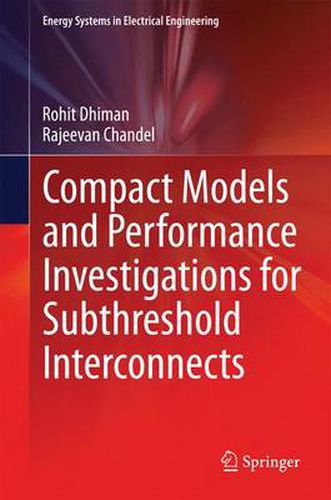Readings Newsletter
Become a Readings Member to make your shopping experience even easier.
Sign in or sign up for free!
You’re not far away from qualifying for FREE standard shipping within Australia
You’ve qualified for FREE standard shipping within Australia
The cart is loading…






This title is printed to order. This book may have been self-published. If so, we cannot guarantee the quality of the content. In the main most books will have gone through the editing process however some may not. We therefore suggest that you be aware of this before ordering this book. If in doubt check either the author or publisher’s details as we are unable to accept any returns unless they are faulty. Please contact us if you have any questions.
The book provides a detailed analysis of issues related to sub-threshold interconnect performance from the perspective of analytical approach and design techniques. Particular emphasis is laid on the performance analysis of coupling noise and variability issues in sub-threshold domain to develop efficient compact models. The proposed analytical approach gives physical insight of the parameters affecting the transient behavior of coupled interconnects. Remedial design techniques are also suggested to mitigate the effect of coupling noise. The effects of wire width, spacing between the wires, wire length are thoroughly investigated. In addition, the effect of parameters like driver strength on peak coupling noise has also been analyzed. Process, voltage and temperature variations are prominent factors affecting sub-threshold design and have also been investigated. The process variability analysis has been carried out using parametric analysis, process corner analysis and Monte Carlo technique. The book also provides a qualitative summary of the work reported in the literature by various researchers in the design of digital sub-threshold circuits. This book should be of interest for researchers and graduate students with deeper insights into sub-threshold interconnect models in particular. In this sense, this book will best fit as a text book and/or a reference book for students who are initiated in the area of research and advanced courses in nanotechnology, interconnect design and modeling.
$9.00 standard shipping within Australia
FREE standard shipping within Australia for orders over $100.00
Express & International shipping calculated at checkout
This title is printed to order. This book may have been self-published. If so, we cannot guarantee the quality of the content. In the main most books will have gone through the editing process however some may not. We therefore suggest that you be aware of this before ordering this book. If in doubt check either the author or publisher’s details as we are unable to accept any returns unless they are faulty. Please contact us if you have any questions.
The book provides a detailed analysis of issues related to sub-threshold interconnect performance from the perspective of analytical approach and design techniques. Particular emphasis is laid on the performance analysis of coupling noise and variability issues in sub-threshold domain to develop efficient compact models. The proposed analytical approach gives physical insight of the parameters affecting the transient behavior of coupled interconnects. Remedial design techniques are also suggested to mitigate the effect of coupling noise. The effects of wire width, spacing between the wires, wire length are thoroughly investigated. In addition, the effect of parameters like driver strength on peak coupling noise has also been analyzed. Process, voltage and temperature variations are prominent factors affecting sub-threshold design and have also been investigated. The process variability analysis has been carried out using parametric analysis, process corner analysis and Monte Carlo technique. The book also provides a qualitative summary of the work reported in the literature by various researchers in the design of digital sub-threshold circuits. This book should be of interest for researchers and graduate students with deeper insights into sub-threshold interconnect models in particular. In this sense, this book will best fit as a text book and/or a reference book for students who are initiated in the area of research and advanced courses in nanotechnology, interconnect design and modeling.